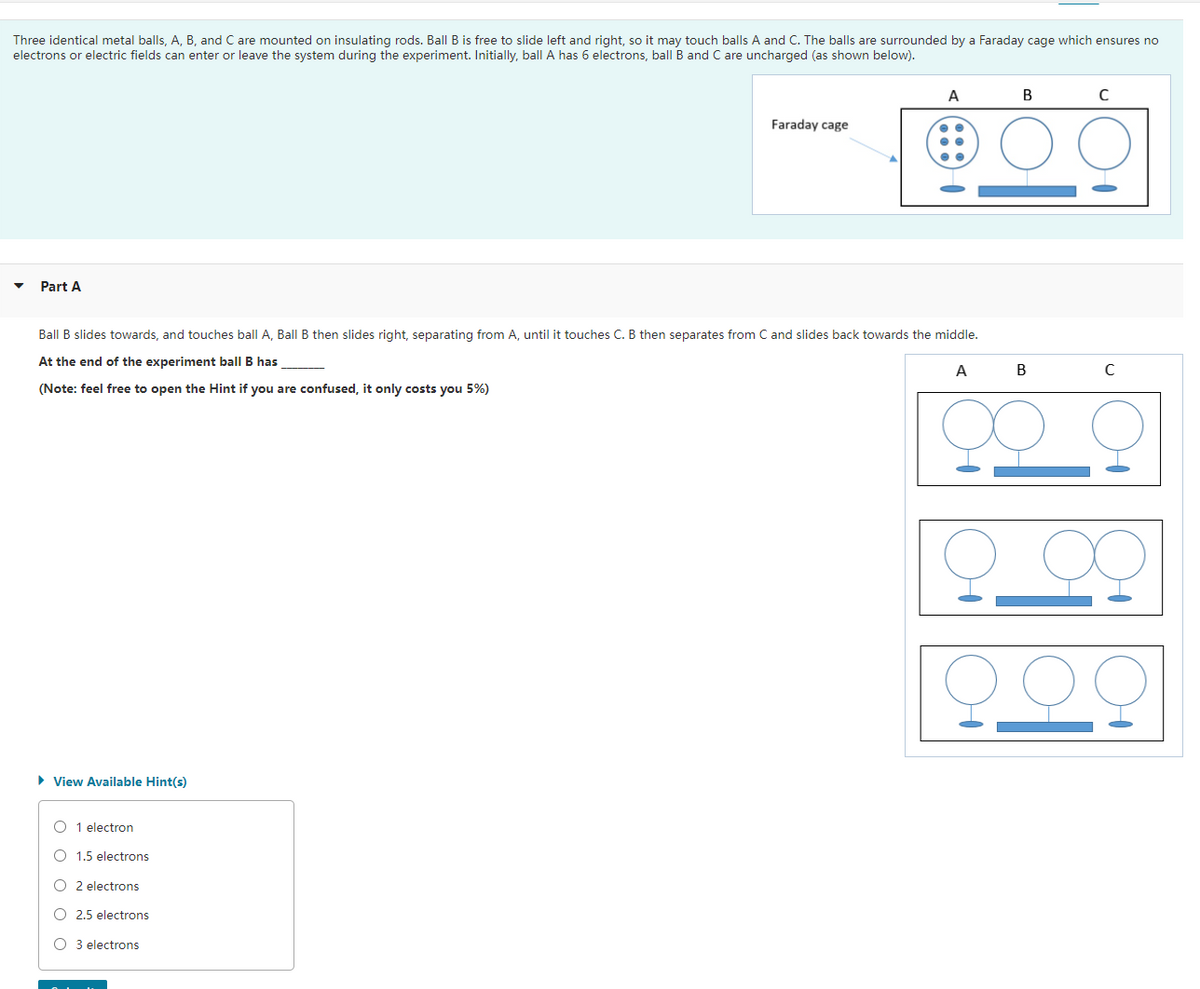Three identical metal balls, A, B, and C are mounted on insulating rods. Ball B is free to slide left and right, so it may touch balls A and C. The balls are surrounded by a Faraday cage which ensures no electrons or electric fields can enter or leave the system during the experiment. Initially, ball A has 6 electrons, ball B and C are uncharged (as shown below). Part A ► View Available Hint(s) Faraday cage Ball B slides towards, and touches ball A, Ball B then slides right, separating from A, until it touches C. B then separates from C and slides back towards the middle. At the end of the experiment ball B has A (Note: feel free to open the Hint if you are confused, it only costs you 5%) O 1 electron O 1.5 electrons O2 electrons O2.5 electrons O 3 electrons A B B C с
Particle Theory of Light
The particle theory of light was the proposal made by Newton in 1704 in his treatise Opticks. This is the most basic light theory, in which light is thought to be made up of microscopic particles known as "corpuscles" and that's why this particle theory of light is also named as Corpuscular theory of light.
Stopping Potential
In an experiment conducted by Heinrich Hertz, an apparatus was made where the incident light was made to fall on the metallic plate, it was discovered that metals emit electrons. The surface electrons are bound to metals with a minimum amount of energy and some of the incident photos enter the surface, they undergo collision with the atoms of the metal, they get absorbed and emit energy to an election, making it photoelectron, where the collision between the photons and electrons ejects the electrons out of the metal and with a negatively charged electron, causes photocurrent and when this current passes it creates an electric field where there is a potential difference at the output due to the anode and cathode of the electrode of the apparatus. This study involves the theory of Quantum physics and electromagnetism involving electromagnetic radiation and electromagnetic wave theory.
Quantization of Charges
An electron is a negatively charged subatomic particle either attached to an an atom or sticks to the nucleus of the atom. Electrons exert the negative charge that tries to balance the positive charge of the nucleus.
Three identical metal balls, A, B, and C are mounted on insulating rods. Ball B is free to slide left and right, so it may touch balls A and C. The balls are surrounded by a Faraday cage which ensures no electrons or electric fields can enter or leave the system during the experiment. Initially, ball A has 6 electrons, ball B and C are uncharged (as shown below).
Ball B slides towards, and touches ball A, Ball B then slides right, separating from A, until it touches C. B then separates from C and slides back towards the middle. At the end of the experiment ball B has _______

Given data,
As per the given data A, B, C are three identical balls.
All three are kept in Faraday cage.
Ball A has 6 electrons that is
Trending now
This is a popular solution!
Step by step
Solved in 2 steps






